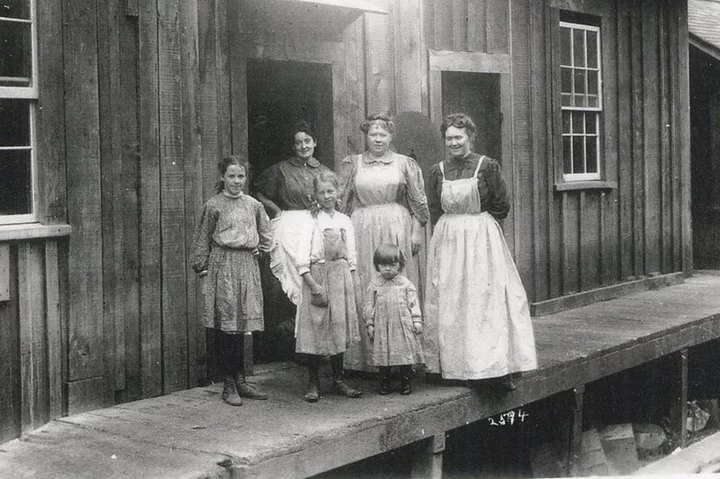The salad days of Falk. Photo via BLM’s Flickr account. Public domain.
Press release from the Bureau of Land Management:
Falk, a historic town and lumber mill site nestled in the Bureau of Land Management Headwaters Forest Reserve, has been named to the National Register of Historic Places.
Listed officially as the Falk Archaeological District, the designation recognizes the site as an area of national significance and worthy of preservation. Remnants of the townsite are visible and marked with interpretive signs along the first half-mile of the Elk River Trail. The most impressive remnant is a fully restored locomotive barn that now serves as an education center.
Archaeological investigations conducted by Humbolt State University (now Cal Poly Humboldt) over 14 years yielded the information that led to approval by the National Park Service, which oversees the National Register of Historic Places, for the Falk listing.
“Credit also goes to our staff and Friends of Headwaters who have found creative ways to explain the history of
Falk through interpretation and restoration,” said Collin Ewing, manager of the BLM Arcata Field Office which oversees the Reserve. “Signs highlighting town remnants make it possible for visitors to visualize life in Falk.”
Falk was a busy logging and mill town from 1884 to 1937. Workers toiled deep in the now-protected redwood stands, felling trees, shipping them on Falk’s very own railroad to the mill, and finally sending the lumber to worldwide markets via a port at present day Eureka. Falk had housing for workers, supported work camps and featured infrastructure, including a mill pond, to keep the lumber operation going. After work stopped, the site fell into decline and decay. The property owners razed the buildings in the 1960s due to safety concerns.
The Reserve was established in 1999, after the BLM and California State Wildlife Conservation Board purchased the 7,400-acre Headwaters Forest. Information on access can be found online.

CLICK TO MANAGE